We’ve all been there at one point. It started as a wild fun night, but now you are sitting on the bathroom floor (most likely, this isn’t your bathroom), and your grip on the toilet bowl would make a professional cowboy jealous. The culprit is a bottle of whisky (or maybe a few more than that), and your last shot is still on the table half drunk.
If you’ve been in this situation before, while your friends give you a lengthy recap of your cringy behavior from last night, you might be thinking, how many shots of whisky will get you drunk? The motivation is that you wouldn’t want to call your ex an hour past midnight the next time you go out. If this describes you, or you’re looking for insight into the biomechanics of whisky, you should keep reading.

Understanding Alcohol and Blood Alcohol Content
Before you count the number of whisky shots it takes to get on the table and start dancing, it would be best first to understand alcohol and what constitutes the blood alcohol content (BAC). Alcohol in the bloodstream is responsible for many effects of being drunk and therefore is important.
Different factors come into play when calculating blood alcohol content. Gender, body weight, duration of drinking, and even genetics all have a part to play in determining the amount of blood alcohol content. From blood, alcohol affects multiple systems in the body, including depression of neuronal, respiratory, and cardiovascular systems (responsible for the overall calmness of your body).
Additionally, its interactions with neurotransmitters in the brain elicit mental complications, such as problems with gait (why you can’t walk straight) and memory (why you can’t remember everything from last night). This action is mediated by the neurotransmitters GABA and Glutamate.
Whisky: Alcohol Content and Types
Another important aspect of whisky to consider is the alcohol content and types. Loved by spirit enthusiasts worldwide, the whisky comes in different shades, bottles, and, more importantly, types. From rye to bourbon, each type of whisky has different alcohol content and taste, producing a varying type and degree of drunkenness.
The alcohol content in whisky is calculated either by proof or as alcohol by volume. You might have come across a percentage written on the side of the bottle next to the abbreviation ABV (alcohol by volume).
Bourbon
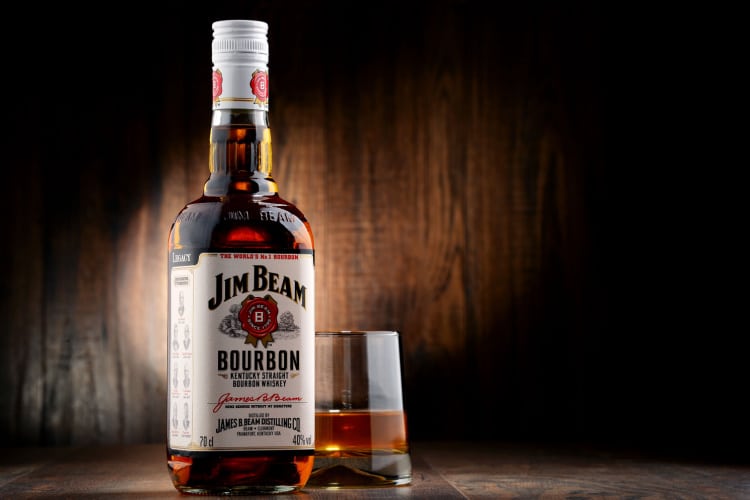
Kicking off the list is the signature American-brewed whisky, bourbon. Typically, bourbon is brewed from corn (legislation demands that manufacturers use 51 percent corn in their mash bill) that is aged in a barrel for a specific amount of time. The alcohol content of bourbon ranges from 40-50 percent (80-100 proof), but higher concentrations are available on the market.
Rye Whisky
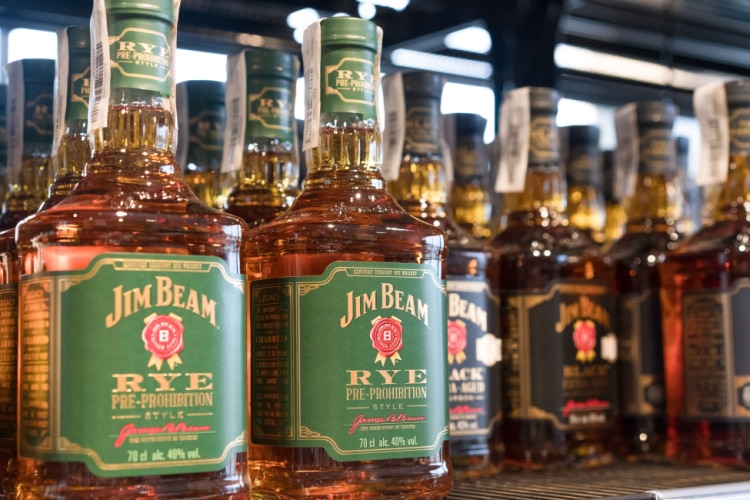
Produced both in Canada and America, rye whisky, as the name suggests, is made from fermenting rye grain. Compared to other types of whisky, rye usually has a spicy flavor. The alcohol content in rye whisky ranges between 40-50 percent (80-100 proof).
Irish Whisky
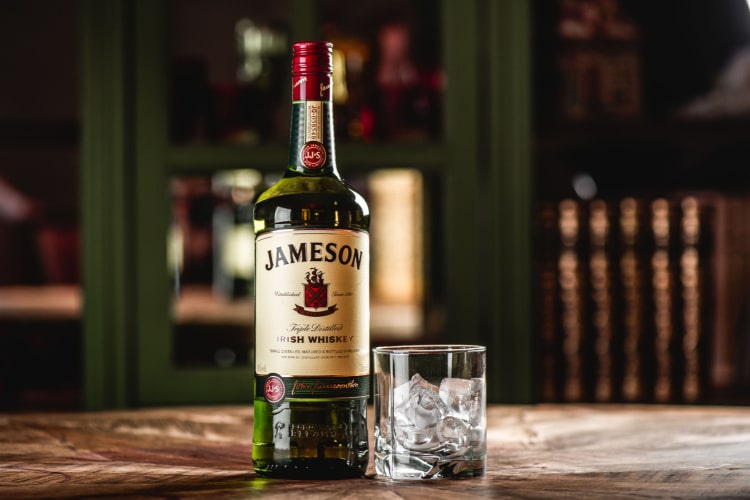
The Irish are known for their appetite for alcohol, and Irish whisky embodies the perfection of a whisky brewery. Straight from Ireland, Irish whisky is made either from malted or unmalted barley (and sometimes a mixture of both), which undergoes a triple distillation process, giving the distinguishing smooth and light flavor characteristic of Irish whisky.
The alcohol content in Irish whisky is 40-46 percent (80-92 proof).
Scotch Whisky
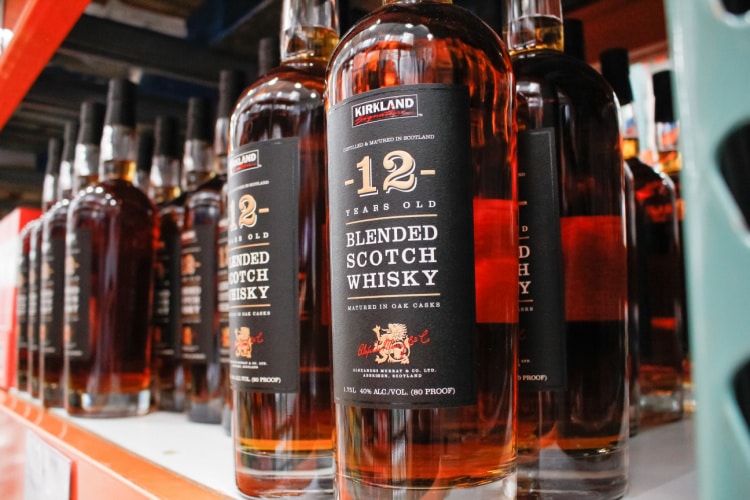
Scotch whisky, popularly known as “Scotch,” is a Scotland product under strict regulatory guidelines. It has a distinctive smoky and peaty flavor and is made from either malted barley or a blend of malted and unmalted barley. It has an alcohol content of 40-46 percent by volume (80-92 proof).
Japanese Whisky
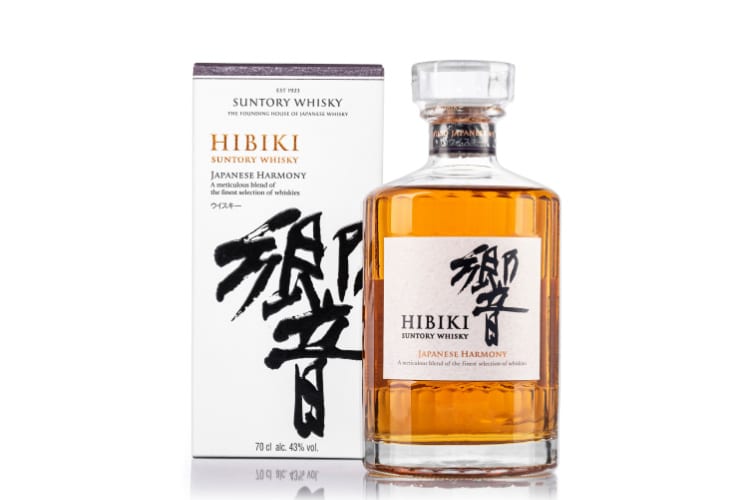
Prized for its exquisite taste and superior craftsmanship, Japanese whisky originates from mainland Japan and is made from refined processes of the traditional Scotch-making procedure. The alcohol content in Japanese whiskey is usually between 40-50 percent (80-100 proof).
What Does it Mean to be Drunk?
Next on the things to familiarize yourself with is the definition of being drunk. Drunkenness varies significantly from one person to the next. While some consider the initial euphoric state succeeding alcohol intake as being drunk, others seem to prefer calling the whole state of losing control of your motor and cognitive functions as being drunk.
However, many agree that being drunk refers to impaired cognition and motor function associated with alcohol intoxication. Depending on various factors, reaching this level of intoxication may take varying amounts of shots of whisky.
Factors Affecting Intoxication Level
Several factors collectively influence the amount of alcohol required to achieve a state of intoxication. These factors are spread between intrinsic factors of an individual, such as age, gender, basal metabolic rate, and alcohol breakdown enzymes, and extrinsic factors, such as habitual alcohol drinking and feeding habits. Consequently, intoxication varies among people, despite consuming the same type and amount of alcohol.
An increased basal metabolic rate, often seen in more physically active individuals and people assigned as male by birth, usually increases the clearance of alcohol from your system. Therefore these people have a higher alcohol tolerance as compared to their counterparts. Additionally, chronic drinking raises your alcohol tolerance by adjusting your intoxication perception level (drinking frequently improves your alcohol tolerance).
Estimating the Number of Shots for Intoxication
Using slightly similar principles to the dreaded breathalyzer (seriously, don’t drink and drive), it is possible to come up with a rough estimate of the total number of shots it would take to become intoxicated. However, as mentioned earlier, it is important to remember that intoxication is subjective, and even taking the same amount of the same type of whiskey on different occasions can elicit different levels of intoxication.
The average man weighing 75 kilograms (166 pounds) would take about 14 grams of pure alcohol to get drunk. This translates to about 15 shots of whisky. This number is reduced almost by half in women since it takes an average of about eight shots to get them drunk. However, these numbers may deviate significantly in either direction depending on the intrinsic and extrinsic factors described above.
A deep understanding of your body’s metabolic process helps paint a more accurate picture of the intoxication process.
Wrapping Up
Whisky is a popular alcoholic drink enjoyed globally by spirit enthusiasts. Understanding how many shots it takes to get drunk can prove useful on nights out as it can save you from depending on the people you are with to get you home safely. It can also save you from a bit of embarrassment while you have fun. Several factors affect the level of intoxication of an individual.